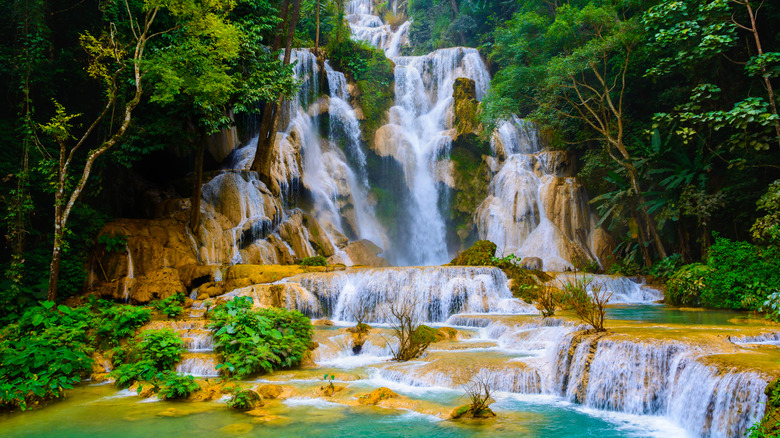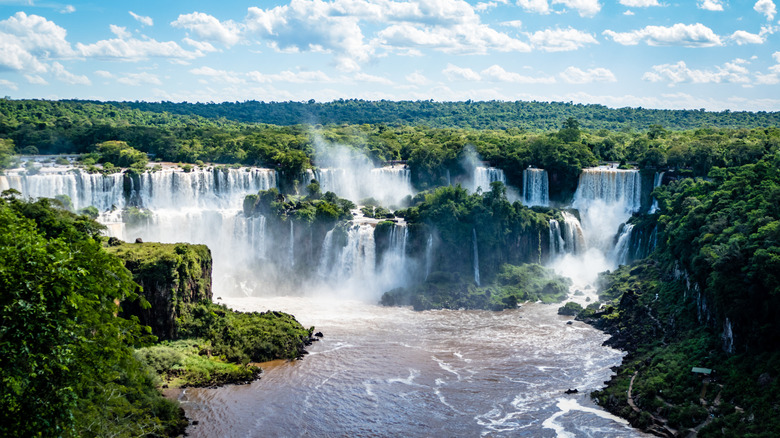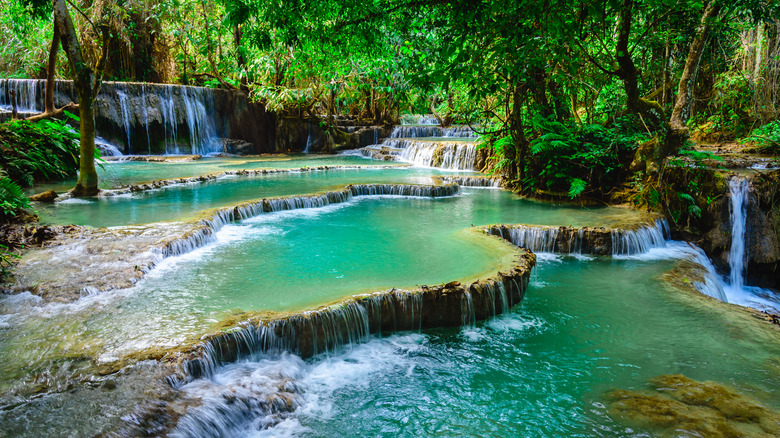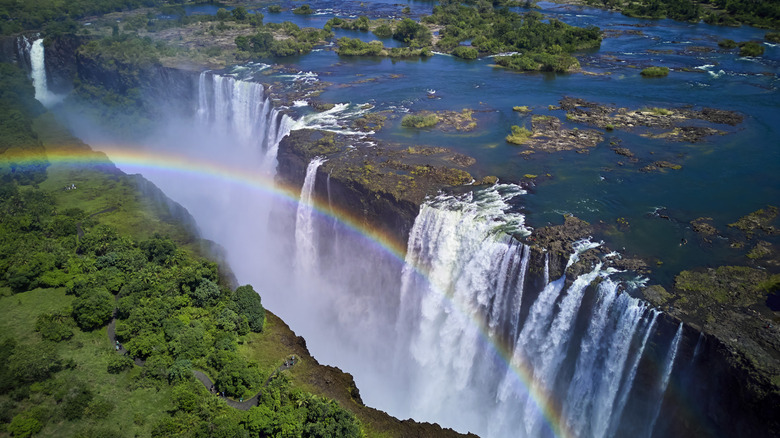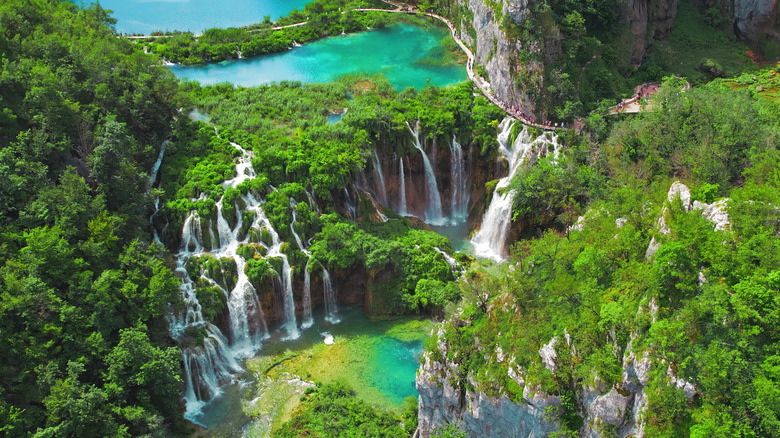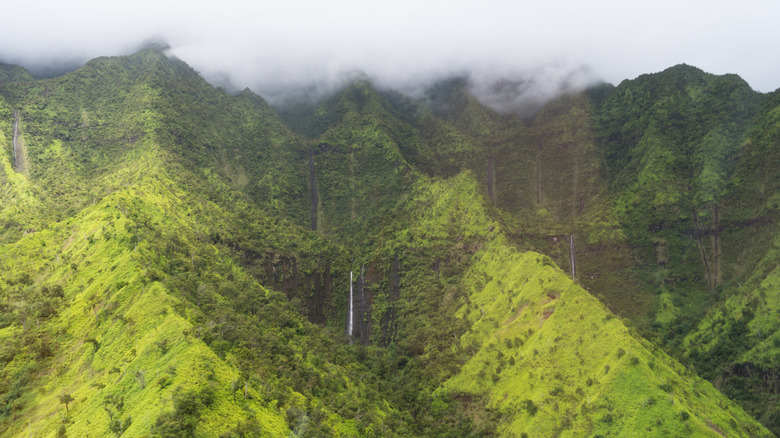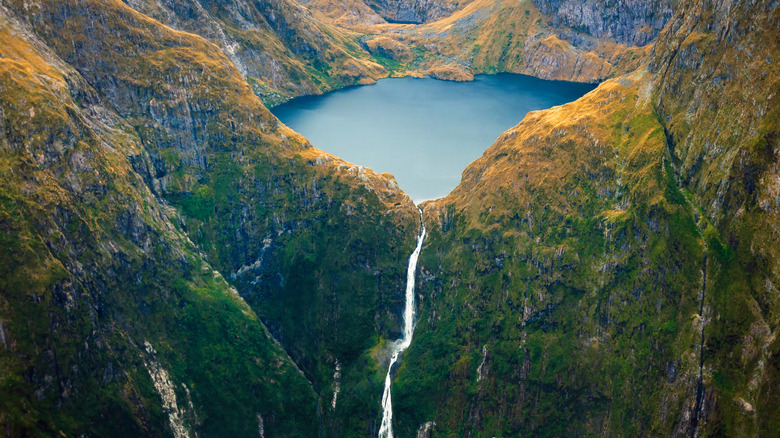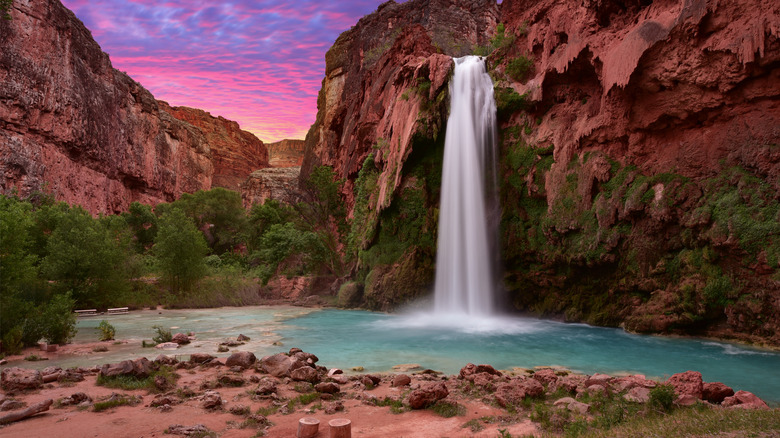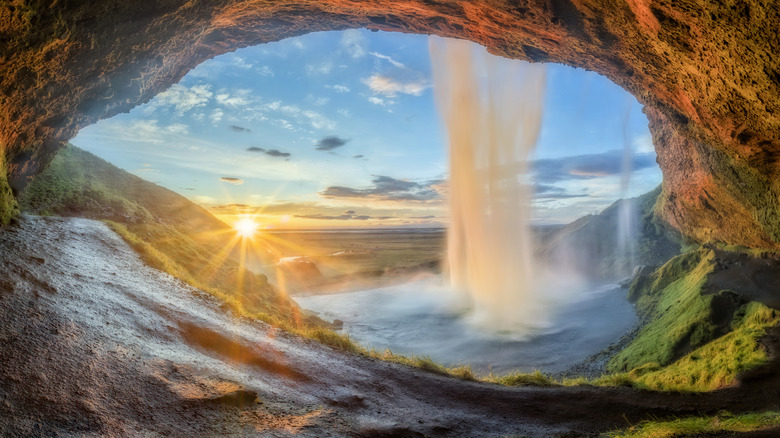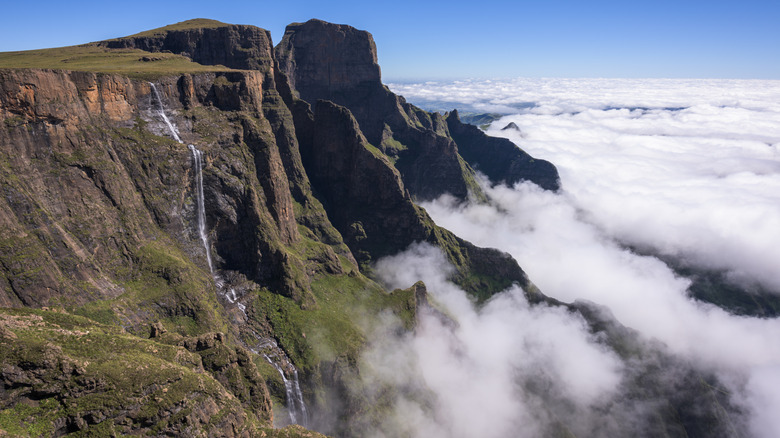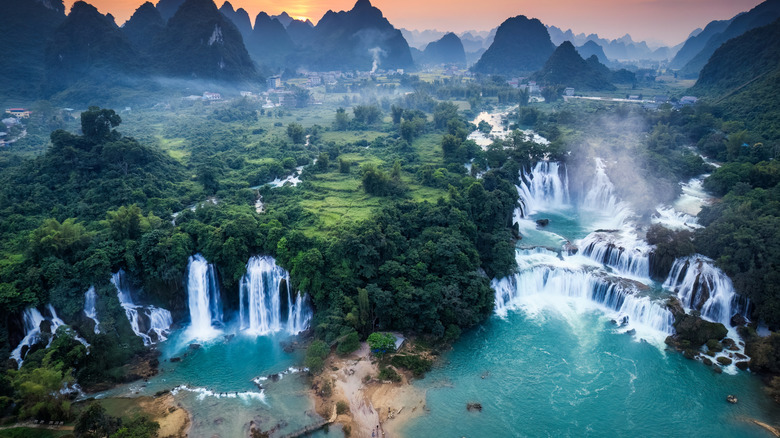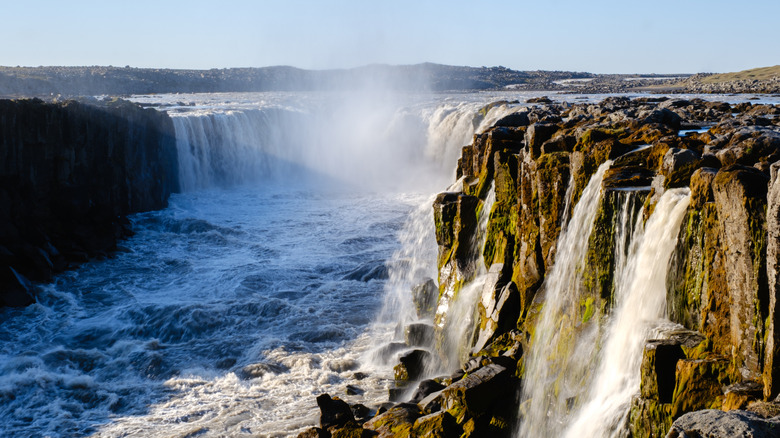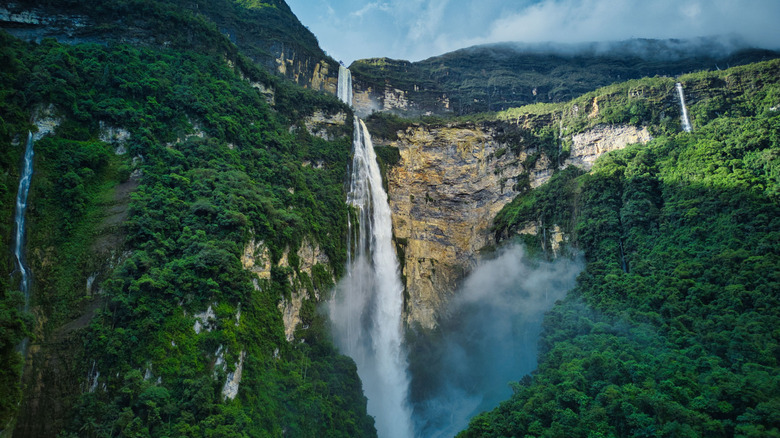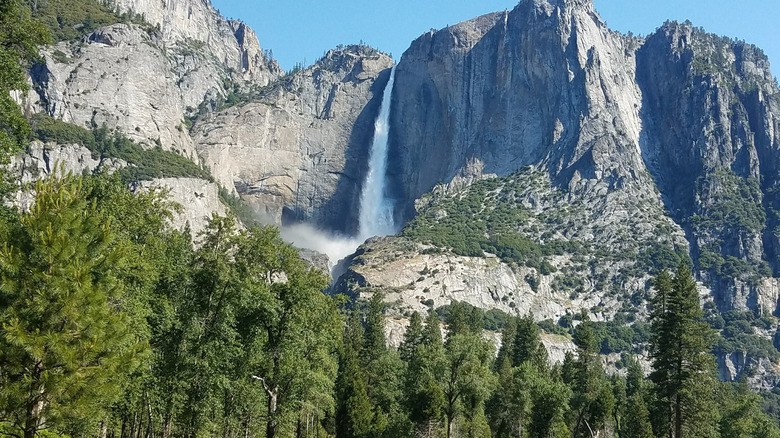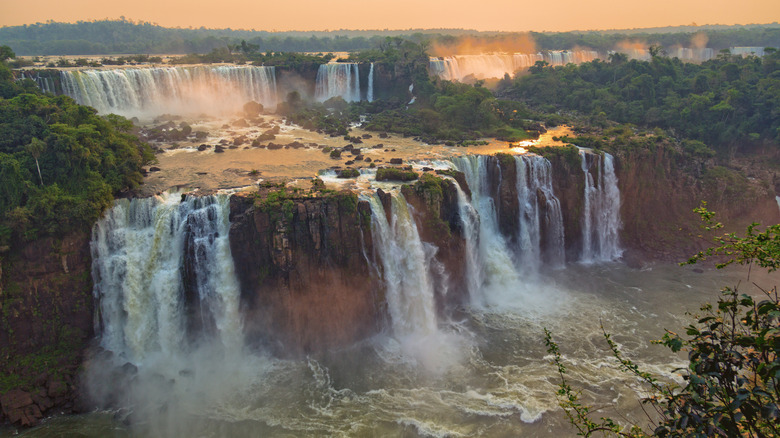The World's Most Ethereal Waterfalls (And The Best Way To Visit Them), According To Travelers
From the soothing sounds of the cascades to feeling the mist on our faces and the spectacular natural beauty, we've never seen a waterfall we didn't like. Ever. Still, some are just more impressive than others. Few natural wonders are quite as awe-inspiring as a waterfall, and we've rounded up the world's very best.
In this list, you'll find waterfalls from all over the world that travelers describe as beautiful, surreal, or just simply unforgettable. Some are massive and powerful, while others are hidden in jungles or high mountain valleys. A few are famous, but many still manage to shimmer under the radar.
Whether you're planning a trip or just daydreaming, a visit to these falls will be something you never forget. We used Reddit, Tripadvisor comments, AllTrails reviews, and lots of travel blogs to compile this guide, ensuring that each waterfall is truly among the world's most magical. For the cherry on top, we'll even tell you how to visit them.
Iguazu Falls, Argentina and Brazil
Tucked within a rainforest that crosses the border between Argentina and Brazil is one of the world's most impressive natural wonders. Iguazu Falls, the world's largest waterfall system with over 275 waterfalls, is utterly awe-inspiring, especially when it comes to the ominously-named Devil's Throat waterfall, which is 269 feet tall. Shrouded in mist and with rainbows crossing over the falls, a visit to Iguazu Falls is something that sticks with you forever. "It is incredible — loved it and it has put every other North American falls I've seen to shame," said one Redditor in r/travel.
Iguazu Falls has two separate parks — one in Foz de Iguaçu, Brazil, and the other in Puerto Iguazu, Argentina. Prices are known to fluctuate frequently, but at the time of writing, admission to the Brazilian side is 117 BRL ($21), and the Argentinian side is 45,000 pesos, or $35.67. Regardless of whether you're based in Argentina or Brazil during your visit, crossing the border is simple, and you can easily reach each park's entrance by bus or by taxi. The Brazilian side is a smaller portion of the falls, requiring only a couple of hours or so, while the Argentinian side is best enjoyed over several hours. Both sides are well worth visiting, offering different but equally incredible panoramic views and up-close looks at the staggering falls.
Kuang Si Waterfalls, Laos
Laos is one of Southeast Asia's most underrated countries, and it's also home to one of the world's dreamiest waterfalls. Well, three, to be exact. Hidden away in the jungles of Laos are three ethereal waterfalls, surrounded by tropical flowers and foliage, and cascading over limestone cliffs with a mesmerizing tone of blue that practically radiates. Kuang Si Waterfalls is nothing short of magical, and the good news is they're pretty easy to reach.
From Luang Prabang (where you'll likely be based during this time), you can reach the falls in around 45 minutes, using a public minivan, tuk-tuk, or motorbike. Entry tickets cost 60,000 LAK ($2.79 at the time of writing). From there, you'll have an easy walk to the first of the falls. Be sure to visit during the dry season, from December to May, to see the stunning blue tone that makes Kuang Si so special. For the rest of the year, the falls will not only be a shade of brown, but they may even be overflowing and impossible to visit.
Victoria Falls, Zimbabwe and Zambia
Running along the border of Zimbabwe and Zambia, the legendary Victoria Falls (also called Mosi-oa-Tunya) is one of the natural wonders of the world. Unsurprisingly, this spectacle takes home the title of Africa's thrilling adventure capital. The sheer power of these falls makes it a true sight to behold — a power you can even feel through the mist that surrounds the falls. "Seeing the falls with my own eyes exceeded every expectation I had," said travel blogger Stoked to Travel. "It was absolutely one of the most magnificent sights I have ever seen."
To see the falls at their fullest, plan your visit for the rainy season, from November to April. They may be dry during the rest of the year, although this is a great time to visit if you'd like to go swimming in the Devil's Pool — an area where you can swim right up the waterfalls' ledge. No matter when you visit, it will be an unforgettable experience. If you are visiting from the Zambian side, entry is around $20 (although certain hotel stays include admission to the park), and you should plan to spend at least three or four hours at the park, as there are numerous hiking trails. Admission from the Zimbabwean side is slightly more expensive, at around $30, but it's also home to the bulk of the falls. There are more show-stopping viewpoints, and the falls are typically fuller when compared to the Zambian side, which dries up for part of the year.
Plitvice Lakes National Park, Croatia
With over 90 different waterfalls and 16 emerald lakes interwoven through lush surrounding forests, Croatia's Plitvice Lakes National Park looks straight out of a fairytale. The massive 74,000-acre national park and UNESCO World Heritage Site can be overwhelming to visit, so be sure to have a plan before visiting, and expect to spend (at least) a few hours. You won't want to leave.
Plitvice Lakes National Park is divided into two sections (Upper Lakes and Lower Lakes), and travel blogger Short Girl on Tour recommends starting at Entrance 1 (there are two official entrances) by the Lower Lakes and going from there. Along the way, you'll be treated to jaw-dropping sites like the park's tallest cascade, Velika Slap, and lots of picture-perfect viewpoints. To save time at the entrance, buy your ticket online ahead of time. Prices vary by time of year, but one-day adult tickets range from 10 to 23 euros ($11.60 to $26.69) at the time of writing. "I had traveled in many countries and in my honest view — this place is one of the most amazing places on earth!," said one Tripadvisor reviewer.
Weeping Wall, Hawaii, U.S.
The 6-mile Weeping Wall Trail — also known as Blue Hole or Mount Waiʻaleʻale — is a dangerous, ethereal hike on a massive Kauai mountain. Muddy, remote, slippery, and often taking more than three hours each way, this trek isn't for beginner hikers. Just getting to the trail is an adventure, as you'll need a high-clearance 4WD vehicle to cross three separate streams.
It's also one of the wettest places in the world, so if there's anything more than light rain, don't attempt the hike, as the risk of dangerous conditions (such as flash flooding) is high. Cell service is also spotty, so rescue services may be limited. Going with a local guide is recommended, and make sure to wear proper footwear and come stocked with lots of water and food. But rest assured that for all the effort that goes into completing this trail, hikers say it's more than worth it. "It's an amazing adventure and the waterfalls/jungle/river are spectacular," said an AllTrails reviewer. With its dozens of narrow waterfalls dropping down the lush cliffs of Waialeale Crater like tears, the view of the Weeping Falls is an image you'll never forget.
Sutherland Falls, New Zealand
Dropping nearly 2,000 feet from Lake Quill down a dramatic mountain wall in New Zealand's South Island are the spellbinding Sutherland Falls. These falls (and the journey to reach them) are nothing short of otherworldly. Located in Fiordland National Park, the hike to the falls is a roughly four-and-a-half-hour detour while on the Milford Track Great Walk, a four-day journey through the park's unparalleled natural landscapes. It's a relatively challenging route, but as one AllTrails reviewer put it, "who can pass up (one of) the tallest permanent waterfalls in New Zealand? Breathtaking!"
Costs for the Milford Track Great Walk depend on the season and the provider you choose. For the fullest falls and clearest skies, aim to visit between November and April. If you'd rather skip the four-day hike and see the breathtaking falls from above instead, you can also take a helicopter or airplane ride from Milford Sound, Te Anau, or Queenstown. A helicopter tour costs NZ$545 ($325), which seems more than reasonable.
Havasu Falls, Arizona, U.S.
With aqua blue water set against the red rocks of Arizona, Havasu Falls is a sight like no other. And getting there requires embarking on one of America's most sought-after bucket list hikes, a 20-mile round-trip trek through the Grand Canyon State's desert oasis. And while Havasu Falls are the most famous, you'll see four other gorgeous falls throughout your journey as well.
The falls are located within the Havasupai Reservation in the Grand Canyon, and you'll need to secure a permit online for the four-day hike. Only 100 are issued each day and typically book out months in advance. They also cost $455 per person for the campground or $2,277 for a lodge room. The trail and campground are closed in December and January, and the lodge is only available from April to November. For the best weather, April, May, late September, or October are the best times. Needless to say, this isn't your standard get-up-and-go hike.
If you need help carrying your gear, avoid using the horses or mules that you'll see available. According to the SAVE Havasupai Horses organization and past travelers, the horses and mules that are used to carry visitors' gear are subject to poor treatment. For travelers who need assistance with their items, a helicopter service is available.
Seljalandsfoss, Iceland
With jaw-dropping glaciers and dramatic black sand beaches, Iceland is bursting with natural wonders, and spectacular Seljalandsfoss is yet another to add to the list. Undoubtedly one of the best things to do in Iceland, the Seljalandsfoss waterfall is absolutely entrancing. Located on Iceland's South Coast, this 200-foot waterfall tumbles out of a towering cliff into a round cave below. In the summertime, you can enjoy the unforgettable experience of standing in the cave right behind the illuminating falls. Floodlights have even been installed to light up the falls at night when there's no midnight sun, meaning you're practically guaranteed a mesmerizing experience.
Entrance to the falls is completely free, but be sure to pack a rain jacket as you're bound to get wet. Although there's really no bad time of year to visit, it can be a little more challenging to walk up to the falls during the wintertime, and they do close occasionally due to weather conditions. The absolute best time is during a summer evening. This is when the lighting will be at its most magical, but keep in mind that this will be a busier time. To get here, either rent a car or camper van and drive directly to the park (the falls are around two hours away from Reykjavík), or go with a tour group.
Tugela Falls, South Africa
With a whopping 3,110-foot drop, South Africa's Tugela Falls are the world's second-tallest waterfalls and an absolute must-see. Cascading down the Drakensberg Mountains within Royal Natal National Park (which has a 45 ZAR entrance fee, or $2.51 at the time of writing), when the falls are enveloped by clouds and mist, they look even more awe-inspiring. "Falls are so high that you can't see the bottom, which is wild," said a Redditor in r/hiking. "Overall, very special experience, highly recommend!" It's a roughly eight-hour hike to reach this phenomenal waterfall, and it will involve some challenges, such as climbing up a chain ladder.
To get to the park, you'll also need a four-wheel-drive vehicle, as some of the roads are unpaved and quite rocky. If this is impossible, arranging transportation will be necessary. Keep in mind that the top of the falls is nearly 10,000 feet above sea level, so snow is possible from the fall through the springtime. Be sure to bring adequate layers. "An absolutely incredible hike. Definitely my favorite so far," said one AllTrails reviewer. "View from the top is absolutely spectacular."
Ban Giốc Waterfalls, Vietnam and China
Spanning across the border of Vietnam and China lies one of the world's most mystical waterfalls. Here, a group of small, multi-tiered waterfalls interconnect, set against a backdrop of karst hills, lush greenery, and mist. "Visiting Ban Gioc Waterfall was an absolutely unforgettable experience that left me in awe of Vietnam's natural beauty," said a Tripadvisor reviewer. "It's a must-visit destination for nature lovers."
To reach these spectacular falls, you'll first have to get to the city of Cao Bằng in Vietnam, then take a two or three-hour bus, van, or taxi ride. Entrance to the falls is 45,000 VND, or $1.72 at the time of writing. You'll want to spend a couple of hours here, exploring the various falls and taking in the incredible views. To get up close to the Ban Giốc falls, you can even take a 10 or 15-minute raft ride for 50,000 VND ($1.91). While here, don't skip checking out the gorgeous Phat Tich Truc Lam Temple right by the falls' entrance, either.
The best time to visit is from September to October at the end of the rainy season, when the falls will be full (but not too full), and the weather will be pleasant. At the height of the rainy season, the water may turn a murky brown, and the falls can merge together. During the dry season, you then risk the water not being full enough.
Dettifoss, Iceland
Europe's most powerful waterfall is none other than Dettifoss, an impressive glacial waterfall characterized by its dark, volcanic rock and rugged landscapes. "When you get up close to it, the ground literally shakes under your feet," shared the travel bloggers at Earth Trekkers. "It's loud, it's thunderous, it's awe-inspiring."
Found within Vatnajökull National Park (entrance is typically free, but a few locations around the park do charge for parking), the waterfall is part of the Ring Road, one of Europe's best road trips, lined with majestic glaciers and fjords. From the parking area, it's just over half a mile to the falls. If you want to keep exploring, pair a trip to Dettifoss with a slightly longer hike toward another scenic waterfall, Selfoss. The entire trip takes about an hour and is well worth it to see more of Iceland's incredible natural beauty. You'll want to plan your visit during the summer, as the roads around the park can often close during the winter.
Gocta Falls, Peru
At over 2,500 feet high, the Gocta Falls in Peru is among the world's tallest and undoubtedly deserves a spot among the most ethereal. Nestled in an Andean cloud forest, this waterfall has two striking drops, and with its lush Amazonian jungle surroundings and rising mist, it's truly a spectacle. The outside world only learned about its splendor in the early 2000s, and since then, it has become one of Peru's must-visit destinations.
For the best weather, plan your visit from April to June, but the falls flow year-round. If you visit from July to August, be sure to arrive early in the morning to beat the crowds. To reach these picture-perfect falls, you have a few different options, but one of the best routes is to fly into Jaén from Lima, and then head another three-and-a-half hours or so by car to an accommodation near the falls. Cocachimba is the gateway town for exploring the falls, and from there, it is a five- or six-hour round-trip hike. Not the easiest to access, but certainly worth the effort. "Outstanding, awesome hike and views," wrote a Tripadvisor reviewer. "Truly a mind-blowing experience."
Yosemite Falls, California, U.S.
With its abundant wildlife, unparalleled landscapes, and endless adventures, Yosemite Falls is one of the world's great bucket list destinations. At the heart of its 748,542 acres is one extra special highlight: the glorious Yosemite Falls. Although the park is home to several gorgeous waterfalls, this one leaves the rest in the dust, reaching a height of 2,245 feet, making it the tallest waterfall in North America.
Consisting of three separate falls (Upper Yosemite Fall, the middle cascades, and Lower Yosemite Fall), visitors can catch a glimpse of them from throughout the park, especially in spots like the Yosemite Village and Yosemite Valley Lodge. Follow a 1-mile loop to reach the falls' lower point, and there's even a wheelchair-accessible loop on the eastern side. If you're up for more of a challenge, there's also a hike to the top of the falls, which takes six to eight hours round-trip. Just keep in mind that the Upper Yosemite Falls trail is one of Yosemite National Park's most dangerous hikes, largely due to its slippery rocks and loose gravel. A compromise is doing just the first two hours of the route, which will still reward you with incredible views.
The best time to visit is during the spring, when you'll see the most water flow. By the summertime, the falls typically dry up. Also note that reservations are required to visit Yosemite National Park from May to September, and there's a $35 fee for vehicles.
Methodology
We scoured Reddit and travel blogs to hunt down the waterfalls most beloved by fellow travelers, while using Tripadvisor and AllTrails reviews (as well as multiple other sources) to confirm that they all live up to the hype. Falls from around the world were included, and the collection features a mix of world-famous and some lesser-known natural wonders. Travel blogs and numerous tourism websites were used to provide accurate information about the falls and how to visit them.
